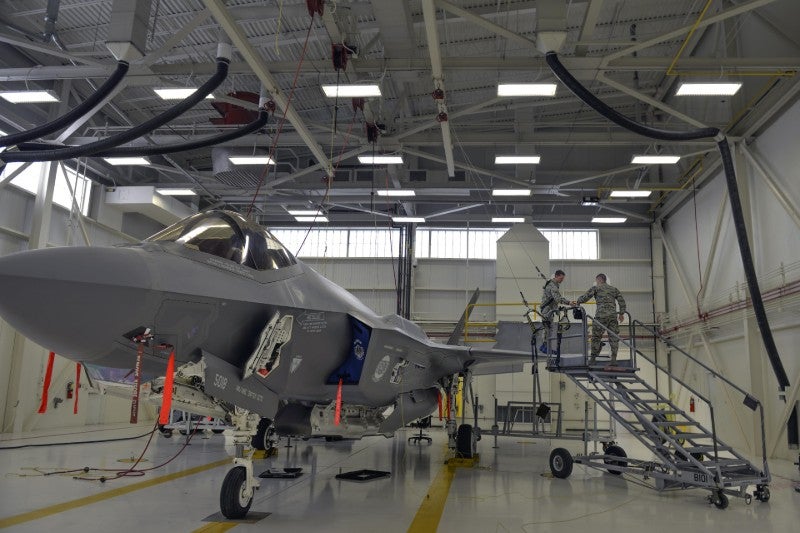
As the US Department of Defense (DoD) plans to buy 2,663 F-35 fighter jet aircraft with deliveries taking place up to the year 2037, the US Government Accountability Office (GAO) has released its latest F-35 progress report, giving its recommendations on substantial supply chain challenges to the F-35 programme. These include spare part shortages, mismatched parts, and an immature global supply network.
Above all, the GAO report indicated that only 27% of F-35 aircraft have reached full mission capability, 33% lower than the minimum target of 60%. Approximately 52% of F-35 aircraft are reportedly mission-capable for one mission, while the minimum target is 75%.
Spare parts shortages and limited repair capabilities
According to the GAO report, F-35 aircraft suffered a spare parts shortage between May and November 2018, and as a result, were unable to fly around 30% of that time period. Furthermore, the US DoD has a “repair backlog of about 4,300 F-35 parts”, and has not established the required actions to meet the war fighter’s requirements.
In response to the F-35 progress report, the DoD said it was addressing this issue and recently signed the Life Cycle Logistics Plan on 31 January 2019.
The DoD wrote: “The availability of critical components will help the F-35 meet the war fighter’s performance requirement and facilitate the iterative adjustments to quantities of parts in the supply chain to ensure requirements can be met across the life of the weapon system.”
Mismatched parts for deploying aircraft
The GAO also noted that the procurement process of F-35 parts, often well in advance of planned deployments, created mismatches as some parts no longer met updated service needs of the F-35 aircraft.
How well do you really know your competitors?
Access the most comprehensive Company Profiles on the market, powered by GlobalData. Save hours of research. Gain competitive edge.

Thank you!
Your download email will arrive shortly
Not ready to buy yet? Download a free sample
We are confident about the unique quality of our Company Profiles. However, we want you to make the most beneficial decision for your business, so we offer a free sample that you can download by submitting the below form
By GlobalDataGiving an example, the GAO mentioned that 44% of parts purchased by the DoD for the Maine Corps were incompatible with the aircraft during a recent deployment.
The DoD responded that it needs to create an “agile process to modify spares packages” and is developing a process with the help from all the branches of the military. Phase one of the plan will be rolled out from August 2020.
An immature global network to move F-35 parts
The third challenge to the F-35 supply chain, as highlighted by the GOA report, is the undeveloped global supply network used to move F-35 parts around the world. As a result, many international F-35 customers have experienced long wait times for spares.
The GAO F-35 progress report asked for a “detailed plan for the establishment of the global network for moving F-35 parts that outlines clear requirements and milestones to reach full operational capacity, and that includes mechanisms to identify and mitigate risks to the F-35 global spares pool.”
In response, the DoD said it had finalised the F-35 Program’s Global Asset Management Strategy to clearly define the “concept of operations for the multi-directional movement of parts” throughout the world.
With the recent news that the first Japanese F-35 aircraft has been found after crash-landing in the Pacific Ocean, and that the US Air Force has just used the first F-35A in combat in Iraq, it is becoming ever more important for the US DoD to improve the global supply of updated F-35 parts, which are now starting to be deployed worldwide.







